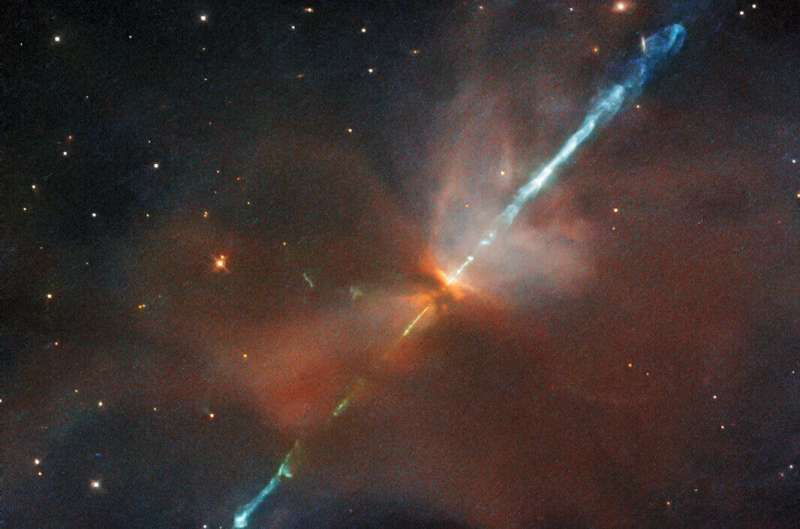'MAYBE'TECH
Hydrostor's big energy storage tech is 'kind of boring', says CEO
Bill Gates is betting on liquid metal batteries that hit 500 C to help smooth out the surges and lulls that come with adding more wind and solar to electricity grids. Saudi Aramco (2222.SR), the world's largest energy company, recently invested in a firm that uses gravity, a giant crane system, and 35-tonne weights, to store vast amounts of power.
For Hydrostor, a Toronto-based compressed-air energy storage company, the way to collect and redistribute the uneven supply of juice from intermittent sources doesn't sound nearly as flashy. But that's actually a good thing, according to the company's chief executive officer.
"Some investors like more of the science project-type stuff. We're not that. We're a very tried and true, kind of boring solution," Curtis VanWalleghem told Yahoo Finance Canada in an interview.
The need for energy storage is rising as utilities around the world look to phase out fossil-fuel power generation in favour of renewables. Hydrostor allows utilities to add more wind and solar to the grid with an updated version of a 50-year-old technology that requires no fuel.
The company uses excess energy to pump compressed air into giant underground caverns. The air displaces water up to a surface-level reservoir. When the power is needed, the water is released back down into the cavern, pushing the air past turbines that generate electricity as it exits.
"The more facilities we build, the more we unlock low-cost wind and solar, and shut down more coal and gas," VanWalleghem said.
Under its current government, Canada has committed to establishing a net-zero power grid by 2035. U.S. President Joe Biden is pushing Congress to pass a law requiring America's grid to get 80 per cent of its power from emissions-free sources by 2030, on its way to net-zero by 2035.
From iron-air batteries to solid-state designs, the race is on to find ways to store excess power from renewables. Investors have taken notice. According to the International Energy Agency's World Energy Investment 2021 report, spending on grid-scale batteries rose by more than 60 per cent in 2020 as investors flocked to renewable energy assets. Data from Texas-based Mercom Capital Group shows venture funding (including private equity and corporate venture capital) raised by battery storage companies in the first quarter of 2021 topped US$994 million. That's up from US$164 million in the same period last year.
"Anything that plays on climate technology is hot. There's certainly a lot of appetite," VanWalleghem said. "Everybody sees that wave coming. They saw how profitable it was for lithium in the short duration. Now they see a good 10 to 20-year run of long-duration opportunities."
Hydrostor aims to be the "day-long" energy storage leader, with facilities able to make money both by providing backup power to utilities, as well as buying and selling at advantageous times. VanWalleghem sees eight to 12 hours as today's duration sweetspot. Storing energy for longer only requires bigger underground caverns, he explains.
Hydrostor's small facility in Goderich, Ont., completed in 2015, became the world's first commercially contracted advanced compressed air energy storage facility, under an agreement with Ontario's Independent Electricity System Operator. Today, the company is in the final stages of securing contracts for two utility-scale $500-million facilities in the U.S. and Australia, while working on two additional projects in the States, and one in Ontario. It is partnered with French fund manager and infrastructure developer Meridiam to finance one of its projects in California.
"We bring in partners at financial close. They provide the construction capital. We get an ownership stake for our efforts, as well as some fees along the way," VanWalleghem said, describing a typical deal for the company. "We're not an infrastructure company."
Earlier this month, Hydrostor received $10 million from Business Development Capital Capital to support its pipeline of projects. That's on top of the $4 million the company received in April from Natural Resources Canada's Energy Innovation Program and Sustainable Development Technology Canada to develop an up to 500-megawatt project in Ontario.
"We've spent that early-stage development money, and are now securing that first wave of contracts," said VanWalleghem. He's eyeing big, new opportunities in India, Spain, Germany, and the U.K., but isn't about to join a growing number of clean energy peers wading into the public markets through IPOs and SPAC deals in order to get there.
Hydrostor's investors include ArcTern Ventures, Canoe Financial, the MaRS Catalyst Fund, Lorem Partners, Elemental Energy and U.S. oil field services company Baker Hughes (BKR).
Look at the companies that will be constructing our facilities . . . these are the people that build refineries for the oil and gas companiesCurtis VanWalleghem, CEO of Hydrostor
VanWalleghem says the connection to the 114-year-old firm, whose name is often associated with a count of how many oil rigs are operating in North America, speaks to Hyrdostor's rejection of "science project stuff" to get the job done.
"Every component we use is from the oil and gas industry. Our caverns are used for hydrocarbon storage, but also in the mining sector," he said. "I view it as a real advantage to be able to piggyback and stand on the shoulders of those giant industries."
Brady Yauch, markets and regulatory manager at the electricity price forecasting firm Power Advisory, sees utilities cautiously looking beyond pumped-hydro storage, which has long comprised the bulk of the storage on North American grids. Unlike pumped-hydro systems, which require elevated topography to work, Hydrostor facilities can be located virtually anywhere a big hole can be dug.
"As much as we'd like the sector to move very quickly and adopt technologies right off the bat, it moves very slowly,” he told Yahoo Finance Canada. “Utilities don’t want to be burdened with technology that either quickly falls in cost, or is replaced with something more efficient."
VanWalleghem counters with the danger of sticking with the status quo.
"There is going to be such demand that no one battery is going to be able to build out the manufacturing capacity to meet it. But the relative risk of trying something new is going down. The risk of building a new gas plant is that five years from now you've got to shut it down, and you lose all that money" he said.
"[Utilities] are being forced to do some new stuff, but you've got to make it easy for them."
For Hydrostor, the peace of mind afforded by using off-the-shelf equipment and services from energy and mining is bolstered by the massive skilled workforce caught in the middle of historic shifts in those industries.
"We've got probably 20 engineers on staff, and probably two-thirds of them come from the oil and gas sector. Look at the companies that will be constructing our facilities, whether that be Bechtel or Schlumberger, these are the people that build refineries for the oil and gas companies," VanWalleghem said. "It's a pretty seamless transition."
Jeff Lagerquist is a senior reporter at Yahoo Finance Canada. Follow him on Twitter @jefflagerquist.













